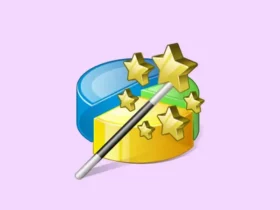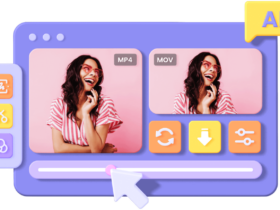What are the best layout software for creating brochures and magazines to print online? Let's find out together in this dedicated article
Printing an online magazine is one of the opportunities available to individuals and companies to spread ideas, raise awareness of products or services, reaching a large audience of people.
Currently, there are several tools available such as programs or software for printing online magazines, brochures and booklets. These technological solutions allow you to modify the final layout, adjusting dimensions, distribution of elements and other relevant factors, so as to create a functional model to send to print.
Let's try to clarify things by listing the best layout software for creating brochures and magazines in 2024.
1. Affinity Designer
This software allows the creation of files for both vector and raster graphics. It is quite easy to use, thanks to its clear interface, and provides users with the Vector Brush tool.
Also called vector brush, it is a tool that combines the freedom of freehand drawing with the advantages of vector graphics. It allows designers and artists to create natural-looking illustrations and drawings, with the ability to edit and scale them without any loss of quality.
Users can customize the stroke style, changing values such as thickness, opacity and gradient, giving them a level of control that is difficult to achieve with other tools.
2. Inkscape
In second position, we find this open-source software for creating vector graphics files. Inkscape supports the SVG format, provides designers with various tools and is characterized by cross-platform compatibility (that is, it can be used on computers with different operating systems, including Windows, Mac, Linux).
3. Adobe InDesign
The famous software allows very accurate control of the layout, being a professional system for operators in the typography sector, including the management of master pages for multi-page brochures, compatible with Adobe Creative Cloud for a more versatile integration of flows working within a team.
4. Canva
Very easy to use web platform thanks to the drag-and-drop interface (drag and drop), it offers a huge number of different templates and elements (especially in the paid Premium version). Online magazine printing becomes more accessible when you use layout software that offers specific guides and templates for this purpose.
As for the typographic sector, it does not boast the same level of customization as Adobe products, being more suitable for simple projects, with a basic design.
5. Microsoft Publisher
Part of the Microsoft Office suite, it offers an excellent level of integration with other programs in the package, such as the well-known Word and Excel. Furthermore, it provides several specific templates for creating brochures for Windows users.
6. Marq
Web-based platform developed specifically for group access to files and projects, it features various models (or templates) and a rather intuitive interface, also in this case characterized by drag-and-drop mechanics.
Specifically for online brochure printing in professional settings, it features real-time editing and feedback capabilities.
7. QuarkXPress
It is a WYSIWYG editor (What You See Is What You Get, translatable into Italian as “what you see is what you get”), that is, it is a type of editing software that allows the user to view a document during its creation, exactly as it will appear in the final version.
Inside you can find advanced typography tools, suitable for digital publications but also for printing a brochure or magazines.
8. Adobe Express
This software is found within the Creative Cloud suite, accessible via the cloud on any device, and provides templates and design tools, allowing users to export the file to PDF without flattening, thus allowing further changes to be made later.
Final notes
The 8 software proposed do not represent the entire software market for the creation of brochures and magazines but they are certainly valid solutions. Depending on your needs, you can explore these options to find the one that best suits your context.
















Leave a Reply
View Comments